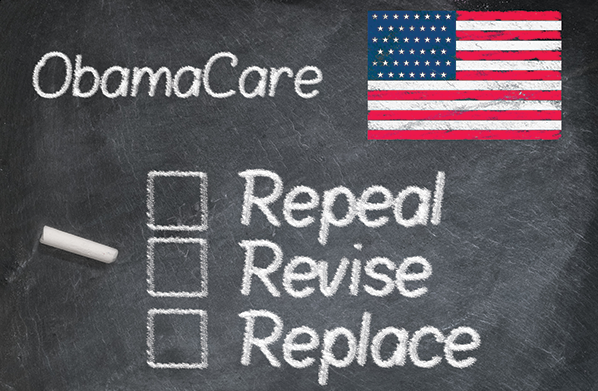The current Republican plan for partial repeal of ObamaCare is replete with downsides that make political opportunists on the left salivate. But consider the recent statement by Aetna’s CEO that ObamaCare is entering a “death spiral” as higher premiums drive healthier customers from the marketplace. This permits a better approach.
The GOP can’t fully repeal ObamaCare because Senate rules requiring 60 votes give Democrats the power to prevent not only the passage of legislation but even its consideration on the floor. Thus Republican leaders have mapped out a plan to repeal the budgetary aspects of the Affordable Care Act under a procedure called “reconciliation,” which requires only a simple majority. The political logic is that voters demand action, and partial repeal through reconciliation delivers some.
But reconciliation is limited to matters of taxing and spending. It can’t be used to repeal most destructive aspects of ObamaCare—the regulations that stifle competition, cause premiums to skyrocket, make finding a doctor more difficult, and reduce plan options.
It could, however, eliminate the financial incentives for insurers to stay in the exchanges. That would accelerate ObamaCare’s collapse, but it would also mean the GOP, not ObamaCare’s fundamental flaws, would get blamed for every cancellation and uncovered patient.
The Democrats could then use the 60-vote threshold of the Senate’s “motion to proceed to consider” to block full repeal and further reforms. The media would be filled with stories of how GOP “repeal” is to blame for all the cancellations and chaos.
Now that insurers are acknowledging the death spiral, there’s an opportunity for bolder action. The House could use regular order, not reconciliation, to pass a bill that not only fully repeals ObamaCare—returning control of the private market to the states—but simultaneously puts into effect at least the core components of reform while including grandfathering and other provisions to smooth the transition to lower-priced options on the free market.
Such a bill could easily pass the House, putting pressure on the Senate. Would Minority Leader Chuck Schumer allow proper consideration of much-needed health-care reform? And with all the evidence that ObamaCare has been a disaster and—untouched by Republicans—is quickly unraveling, would Democrats, 25 of whom are up for re-election next year, vote to defend the status quo?
There would be two Senate filibuster points—the first, to allow consideration; the second, to allow a vote. Thinking through what would happen, the American public and Trump administration would be well served by this exercise of transparent democracy.
Ideally the Democrats would eschew both filibusters, and Americans would be granted the health-care relief they need.
If Democrats blocked consideration of the bill, they would do President Trump a favor by showing the public the parliamentary shenanigans of the anti-deliberation filibuster—call it the “Senatorial Full Employment Through Avoiding Tough Votes” maneuver. Since the 1990s, legislation has routinely passed the House only to die without debate in the Senate. Helping the public understand this game, and exacting a political price for it, would be hugely helpful to passing the rest of Mr. Trump’s legislative agenda.
If Democrats refuse to allow debate, Republicans should kill the filibuster against deliberation (as distinct from the filibuster to end debate and hold a vote). They can do so by simple majority vote, as Harry Reid showed when he ended the filibuster against most nominations in 2013. Either way, the Senate can actually have a vote on repealing the Affordable Care Act and reforming health care.
Particularly if Mr. Trump has reversed the still-standing congressional exemption from ObamaCare, and unions want to see the “Cadillac tax” on generous employers plans repealed, there should be enough votes to overcome a filibuster and pass this better approach—which, unlike the present plan, would spare Republicans from having to impose a tax increase down the road to pay for reform. And if Mr. Schumer and his party want to put ideological allegiance to a failing law over the health and well-being of the American people, we need to see that.
The plan to proceed with partial repeal through reconciliation is already well down the road. Human tendency and momentum—along with a desire for certainty, for tax-reform projections if nothing else—will incline congressional Republicans not to change course.
But they should. They would be wise to consider this bold alternative, which could ultimately be the strategic solution—not only for reforming health care but for making the Senate a functioning, deliberative body once again, and thereby enabling the passage of their larger agenda.


